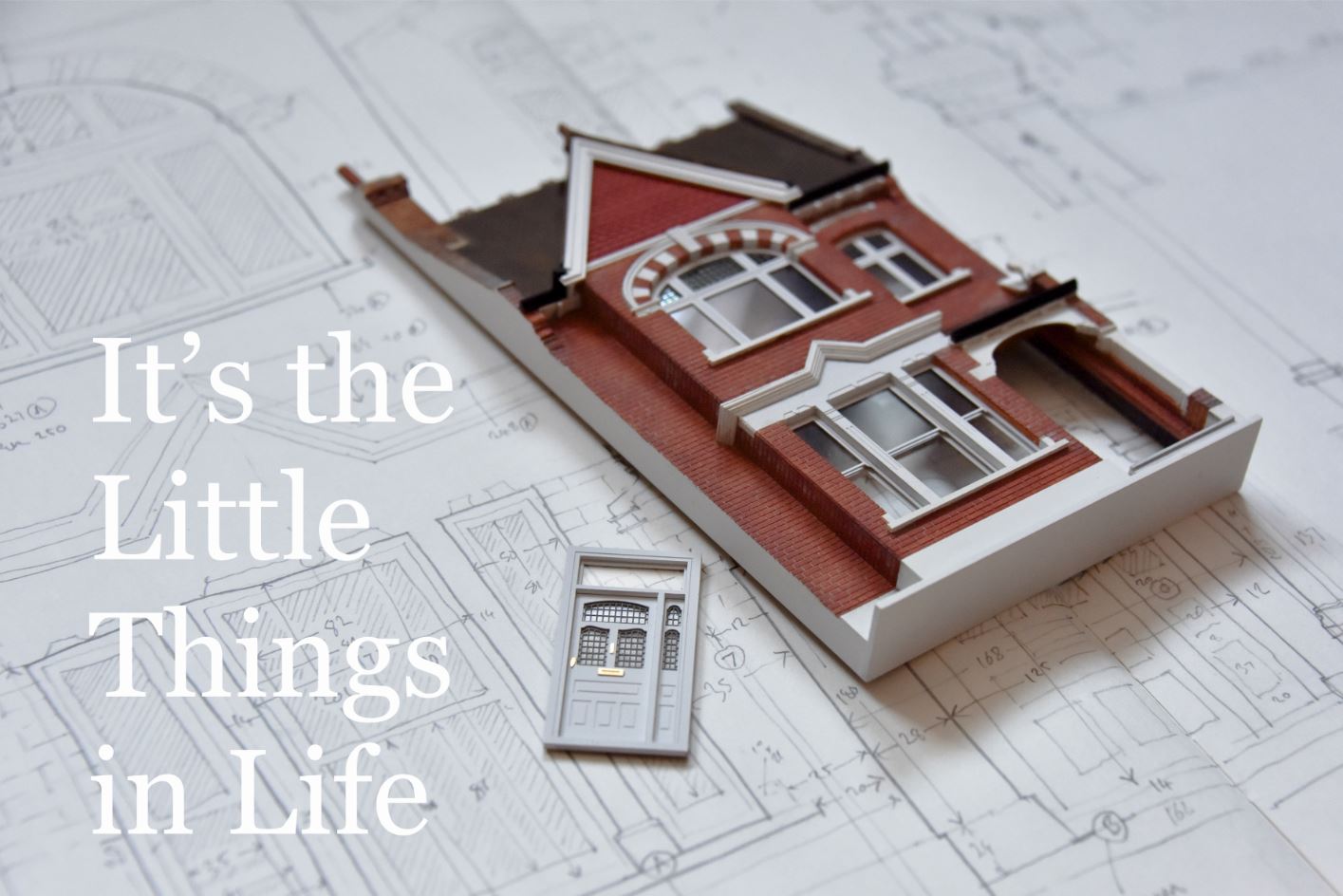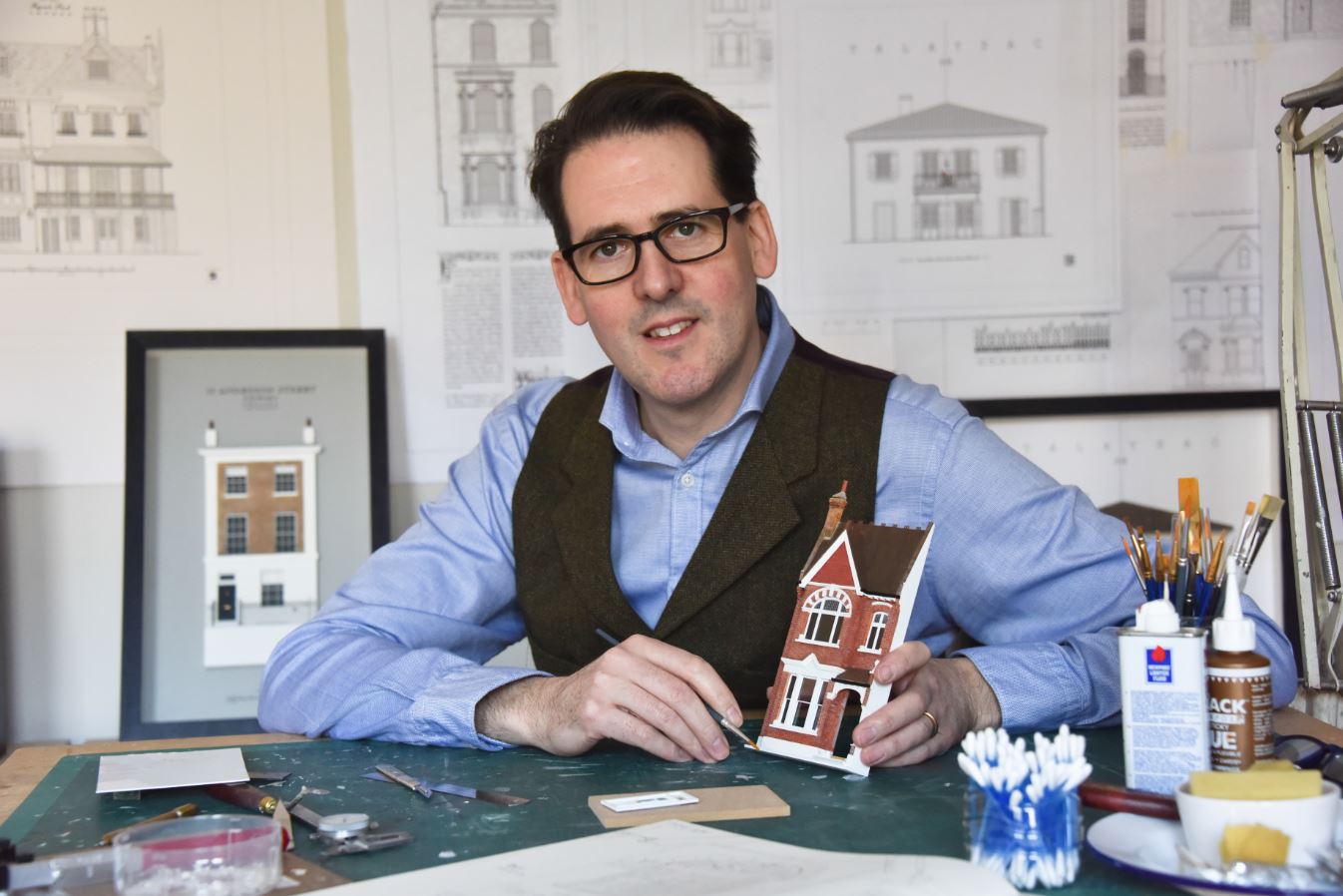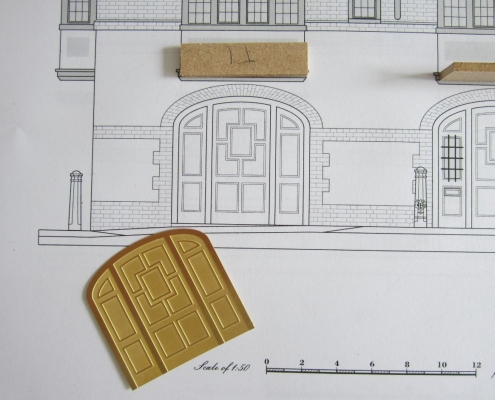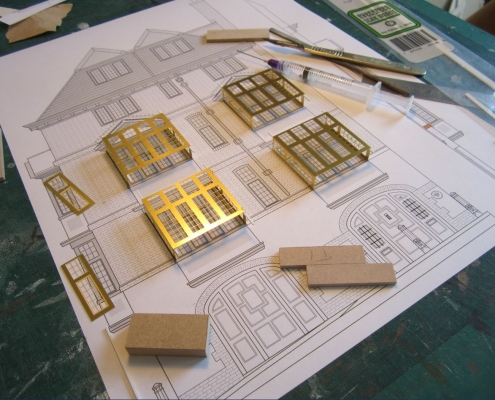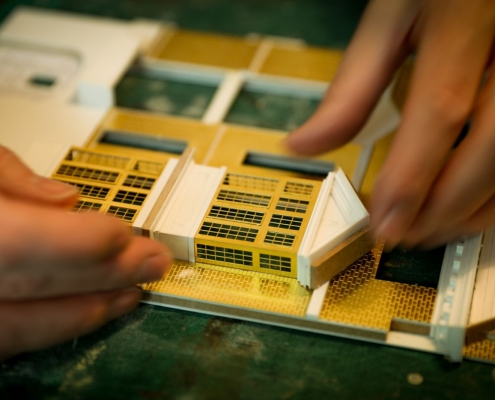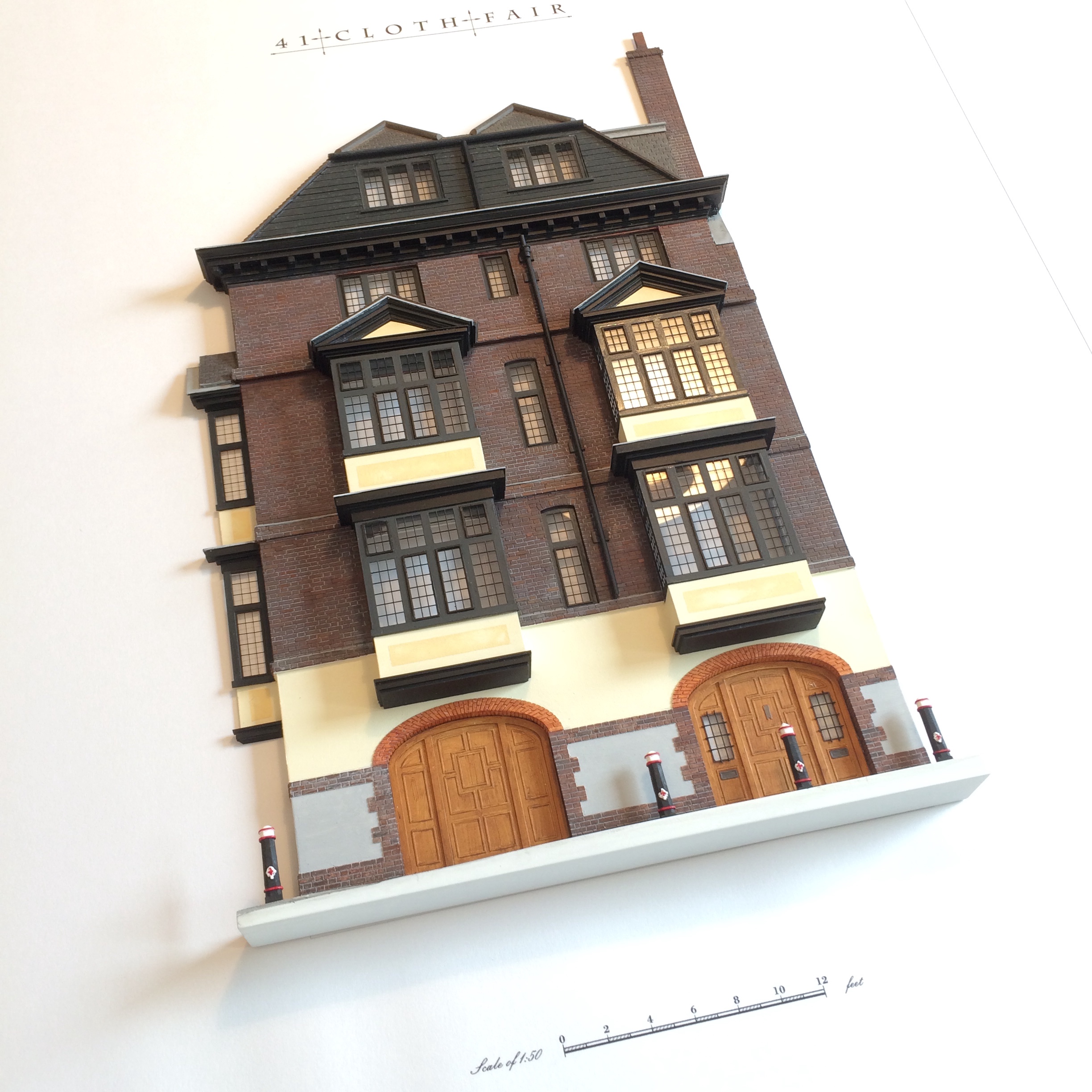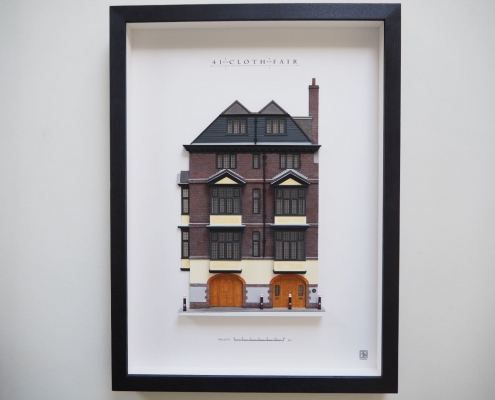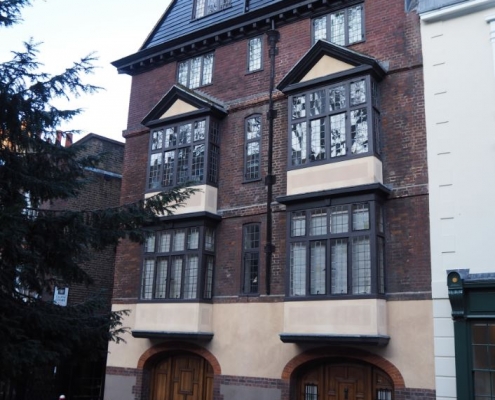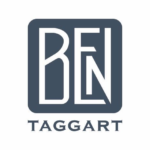This article was recently printed in the Listed Property Owners Club Magazine, ‘Listed Heritage’
For over twenty five years modelmaker and designer Ben Taggart has literally carved out a niche running his own very small business making architectural models.
To the uninitiated, model making may not appear to be a very attractive or particularly hip thing to do. “Often when I tell people that I make models” says Ben, “I have to overcome a strange feeling of being completely misunderstood. Model making is a very wide field encompassing everything from small children making kits, through to an adult fascination to return to childhood through dolls’ house collection or building model railways.” Even in the much narrower sub-section of the genre ‘Architectural Modelmaker’ is too broad a definition for Ben’s career. His is a small world indeed, as his work encompasses creating models as portraits of period buildings or Listed Properties.
Ben studied Graphic Design and Filmmaking at Central Saint Martin’s School of Art. On graduation in 1990 he started work for Gerry Judah Studio Ltd. creating models for film and television. This was towards the end of an era when the industry still required models as props and for sets and backgrounds. As this way of working began to be superseded by the advent of computer graphics Ben decided to concentrate on making models for museums and private clients, with the idea that these were artefacts with longevity, tangible objects that could be viewed for years to come.
Model making work has brought Ben together with many wonderful people, the owners of remarkable houses who share his passion for the miniature. Often the question arises- Why would you want a model if you have the actual house? The answer is a source of fascination to Ben. “The purpose is important; I’m not just creating decorative ornaments. I believe that these models can express a vision which inspires us to look more closely at the detail which ordinarily passes unnoticed. When constructing my model house fronts, I am able to find forgotten rhythms in the architecture; the alignment of windows or the proportions of the property, of which the owners may be unaware. When the building is brought down to a miniature size and displayed in a frame people see the beauty of the house as a whole.”
A recent commission turned out to be one of the most fascinating houses Ben has ever encountered. Hidden down a narrow street next to St Bartholomew’s in Farringdon, 41 Cloth Fair is a truly remarkable Grade II* Listed house. Built between 1597 and 1614 it is said to be the oldest private dwelling in London and was the only house to survive the Great Fire in 1666. It has been used variously over its long life as two separate dwellings, an ale house, and a cutlery factory. It was subsequently owned from the 1930s to the ‘60s by the architects and socialites John Seely and Paul Paget. They ran one of the most noteworthy architectural firms of the inter-war years, completing their masterpiece Eltham Palace in 1936. The couple were business as well as personal partners, and their successes led them to associate with a plethora of celebrities of the day. In the sitting room on the first floor Seely and Paget entertained the likes of John Betjeman, J.B. Priestly, Viscount Montgomery, Joyce Grenfell, Yehudi Menuhin and Queen Elizabeth the Queen Mother to name but a few. Their visits were recorded by an invitation to etch their signatures on the panes of the leaded windows with a diamond pen. The present owner has continued this tradition and expanded this extraordinary collection of autographs to include his own notable friends.
When Ben was asked to make a model of this amazing house it was clear that the owner was full of passion for his home, calling it “the best house in the best part of the best city in the world”. He is proud to be fully integrated into the life and history of the old City, being a City Councillor and advocate of London’s new Culture Mile incorporating Moorgate, Barbican, Smithfield and Charterhouse.
“I was thrilled with Ben’s model and having seen his work I knew he was capable of capturing every detail. What surprised me was the sensation of seeing the most normal of objects reduced in scale. A row of cast iron bollards are set into the pavement outside the house, and seeing those in miniature makes everyone gasp with amazement! It is making the beautiful out of the ordinary.”

